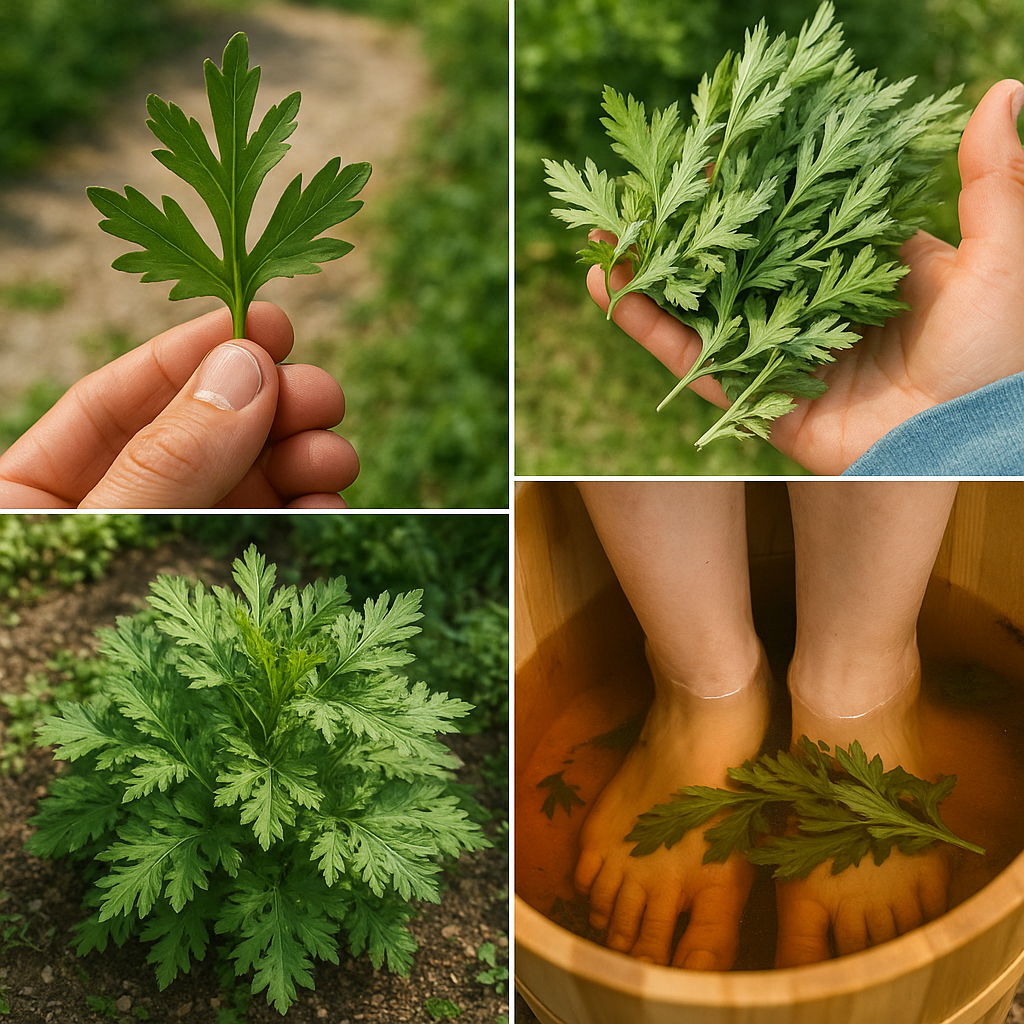✨ What if that wild, scruffy-looking plant growing in abandoned lots and untended gardens was actually one of the most powerful herbs for healing your digestion, calming your mind, and soothing your skin?
Meet Mugwort (Artemisia vulgaris) — an ancient herbal ally often mistaken for a useless weed. But for centuries, cultures around the world have known better. Mugwort is a plant steeped in both folklore and powerful natural medicine, used from Europe to Asia to North America for everything from dream enhancement to infection control.
Let’s explore why mugwort is making a modern comeback in herbal wellness — and how you can harness its surprising benefits in your daily life.

🌿 1. A Legacy Rooted in Ritual and Healing
🌙 Long before it was studied in labs, mugwort was considered a magical plant. It was used in rituals to ward off evil, carried in amulets for protection, and even placed under pillows to induce vivid dreams. But beyond the spiritual, mugwort earned its place in traditional medicine for very real reasons.
Its medicinal use spans generations — often brewed as a tea, applied as a poultice, or infused into oil. Today, it’s being rediscovered not for its folklore, but for the potent healing properties locked inside its slender green leaves.
🥄 2. A Natural Digestive Tonic
🍵 One of mugwort’s most trusted uses is as a remedy for digestive discomfort. It stimulates the production of gastric juices and bile, making it easier for the body to break down food. This improves nutrient absorption and reduces issues like bloating, gas, and sluggish digestion.
To use it, simply steep a teaspoon of dried mugwort leaves in hot water for 10 minutes. Sip this tea before or after meals to help your digestive system work more efficiently and comfortably.
🌼 3. A Calming Solution for Irritated Skin
Mugwort is loaded with anti-inflammatory and antimicrobial compounds that make it highly effective in treating skin issues. In Korean herbal skincare, mugwort is known for reducing redness, irritation, and acne — but this is no modern fad. Ancient healers also used it to soothe rashes, eczema, and minor wounds.
To make a simple mugwort skin remedy, crush fresh leaves into a paste and apply it as a poultice to the affected area. You can also infuse the leaves in olive or coconut oil, then strain and use the oil as a calming topical treatment.
🌸 4. Menstrual Comfort and Hormonal Support
For centuries, mugwort has been used by women to regulate their menstrual cycles and ease the pain of monthly cramps. It’s classified as an emmenagogue, meaning it helps stimulate blood flow in the pelvic area and uterus, making it useful for delayed or painful periods.
Women seeking natural menstrual support often turn to mugwort tea. While effective, this herb is potent — and should be used cautiously. It is not recommended during pregnancy without professional guidance due to its strong uterine-stimulating properties.
💧 5. A Natural Shield Against Infection
The leaves of mugwort contain antibacterial and antifungal compounds that support the body’s ability to fight off common pathogens. It’s particularly useful for wound cleansing and preventing skin infections, especially in natural first aid settings.
To take advantage of this, you can prepare a mugwort tincture or use a strong infusion as a rinse for small cuts, scrapes, or fungal conditions like athlete’s foot.
🌙 6. Anxiety Relief and Better Sleep
Mugwort isn’t just for the body — it supports the mind too. Its mildly sedative effect has been traditionally used to calm anxiety, ease restlessness, and promote deeper sleep. Some herbalists even recommend it to those dealing with nighttime stress or racing thoughts.
Drinking a mugwort tea an hour before bed can help you unwind and relax your nervous system naturally. For added dream-enhancing effects, some even tuck a sachet of dried mugwort beneath their pillow.
🌿 How to Use Mugwort Safely and Effectively
✨ Mugwort Tea
Use 1 teaspoon of dried leaves per cup of hot water. Steep for 10 minutes and drink warm. Ideal for digestion, relaxation, and hormonal balance.
✨ Mugwort Oil
Infuse fresh or dried leaves in a carrier oil over low heat or for several weeks at room temperature. Use the strained oil on skin irritations or sore muscles.
✨ Poultice or Paste
Mash fresh mugwort leaves and apply directly to bites, inflamed skin, or areas needing relief.
✨ Bath Soak
Add a handful of mugwort leaves to hot bathwater to soothe your skin and relax your entire body.
⚠️ While mugwort is incredibly beneficial, it’s a powerful herb and should be used with care. It’s not recommended for pregnant women and should be avoided in large doses or prolonged use without guidance from an experienced herbalist or healthcare provider.

🌿 A Humble Herb with Limitless Possibilities
Mugwort’s story is one of quiet strength. It doesn’t demand attention with bright colors or intoxicating scents — it works behind the scenes, supporting your digestion, easing your nerves, healing your skin, and bringing balance back to your body.
This plant is a reminder that nature doesn’t always need to be loud to be powerful. Sometimes, the most effective remedies are those that have quietly stood the test of time.
So the next time you pass by a patch of mugwort, don’t overlook it.
🌱 Stop. Harvest. Brew.
And let this unassuming plant reveal its centuries-old healing secrets, one leaf at a time.


